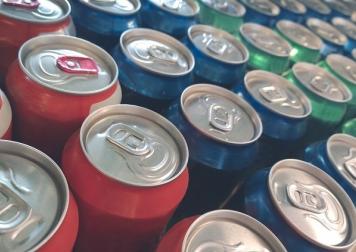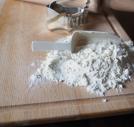Recognizing Hypoglycemia
Hypoglycemia, or low blood sugar, is an emergency that, if left untreated, may result in seizures, diabetic coma or death.
Hypoglycemia, also known as insulin shock or insulin reaction, occurs when there is insufficient glucose to power body functions. That means roughly 70 mg/dl or less on a blood glucose reading (although certain individuals will have a different reading for what is low for them).
Symptoms of Hypoglycemia
Everyone reacts to low blood sugar differently. Because of this, it is important for the person with diabetes to become aware of their own physical responses when their sugar is low. There is a long list of possible symptoms, including:
- Physical changes: shakiness, sweating, clamminess, heart racing, palpitations, lightheadedness, hunger or nausea, blurry vision, headache, fatigue, lack of coordination, sleepiness, tingling or numbness in the lips or tongue, seizures, unconsciousness.
- Mental changes: irritability, impatience, confusion, delirium, anger, sadness, nightmares or crying out during sleep.
All of these symptoms come on quickly, and often the person with diabetes is experiencing more than one symptom at a time. The person with diabetes is likely to be quite impaired.
Causes of Hypoglycemia
There are a number of diabetes drugs that can cause low blood sugar, including the sulfonylureas and the meglitinides. Other, older diabetic treatments, including orinase, tolinase, and diabinase, are more likely to cause low blood sugar than most newer drugs. However, glimepiride, Nateglinide, Prandin and sitagliptin are three newer drugs that can also drop sugar too low.
There are also non-diabetic drugs that may cause blood glucose to drop too low, such as aspirin, Benemid, Coumadin, Zyloprimor and Probalan.
Insulin itself, if too much is taken, could also lower blood glucose to dangerous levels.
Other causes of hypoglycemia include consuming a meal that contains a lot of simple sugars, consuming alcohol without consuming any food, missing a snack, eating too late in the day, not consuming an entire meal, or not eating at all because of illness.
Diagnosing Hypoglycemia
The only sure way to diagnose hypoglycemia is to test blood sugar levels. If the person with diabetes generally controls their glucose levels very tightly and begins to experience one or more of the symptoms listed above, hypoglycemia should be considered, and treatment should begin.
Treating Hypoglycemia
If a person with diabetes feels that he or she might be experiencing low blood glucose, they should first check their blood sugar. If it is lower than 70 mg/dl, they should immediately consume 15 to 20 grams of a simple carbohydrate:
- 2 tablespoons of raisins
- 4 ounces of fruit juice or regular (not diet) soda
- 1 tablespoon of sugar, honey or corn syrup
- 8 ounces of non-fat or 1% milk
- glucose tablets or a glucose gel tube
Wait 15 minutes after consuming the carbohydrate item, and then check blood glucose again. If it's still too low, take another portion of carbohydrate. Wait 15 minutes and check again.
Once glucose levels return to normal, eat a small snack if the next meal is one hour or more away.
If the person with diabetes is unconscious, first call for an ambulance. Then attempt to rub a tablespoon of honey, sugar, corn syrup or glucagon gel on their gums or inside their cheek. Do not force liquids or solids as the person may choke on them. Wait 15 minutes and try again, if an ambulance has not arrived.
Sources: WebMD and American Diabetes Association
Image credit: NY Presbyterian Hospital


































